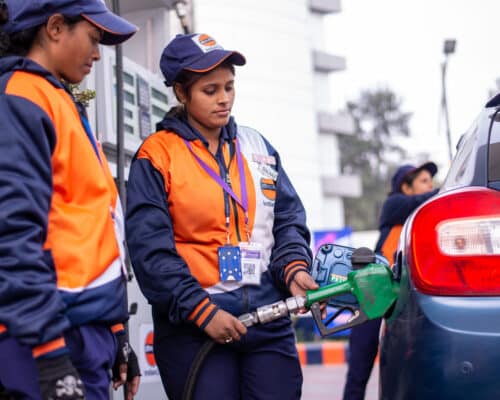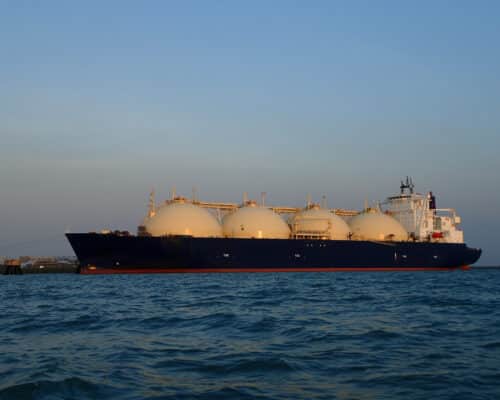COP28 Loss and Damage Fund: A Historical Win or a Distraction From the Real Problem?
20 December 2023 – by Viktor Tachev
COP28 UAE marked a historical moment: the operationalisation of the Loss and Damage Fund to compensate the most vulnerable countries for the impacts of the climate crisis. While still in its early days, the mechanism has various loopholes – from insufficient pledges and unclear funding distribution plans to the lack of obligations for the biggest polluters to participate. This comes in front of a backdrop of rising emissions while the world heads for a 2.9°C warming scenario that will only exacerbate the struggles of the most vulnerable communities.
The Emissions Gap Report 2023: Just 14% Probability of Achieving the 1.5°C Target
The Emissions Gap Report 2023 by the United Nations Environment Programme (UNEP) warns that the world is witnessing a “disturbing acceleration in the number, speed and scale of broken climate records”.
It estimates that the probability of heading towards levels of 2.5-2.9°C in global warming since pre-industrial times sits at 66%. At the same time, the probability of limiting the temperature rise to 1.5°C is 14%.
The authors warn that limiting rising temperatures in accordance with the Paris Agreement requires a 42% emissions reduction by 2030. In 2022, emissions from burning fossil fuels rose by 1.2%.
As a result, the United Nations Secretary-General António Guterres said the emissions gap was “more like an emissions canyon” filled with broken promises, lives and records.
What Are the Consequences and Who Bears the Costs of Climate Change Inaction?
A future where the temperature rise exceeds 2.5°C would be one that nobody would want, says the report’s lead author, Anne Olhoff. The reason is that it will make severe weather impacts more probable and frequent.
The findings are consistent with the latest climate change science review by the IPCC. It concluded that nature’s tipping points get into the high-risk category between 1.5°C and 2.5°C and the very high-risk tier between 2.5°C and 4°C.
Similar to previous studies, the Emissions Gap Report confirms that the contribution of developing countries in Southeast Asia to the rising temperatures is minimal compared to the developed world and its large economies.
Yet, along with other low-polluting regions like Africa and low-lying island countries worldwide, Southeast Asia is among the most exposed to the impacts of climate change. According to the IPCC, the region faces an increased risk of floods, heat stress and rising sea levels, which can cause the degradation of various ecosystems, water and food scarcity and displacement.
Despite leading emitters being aware of climate issues and the need to achieve more ambitious emission reduction targets, nations have not done enough, the report’s authors warn.
COP28 2023: Operationalising the Loss and Damage Fund
The Emissions Gap Report 2023 was released just before COP28 2023 to inform parties about the outcomes needed from the Global Stocktake. The report’s intention was to motivate parties to demonstrate ambition during the next round of NDC submissions in 2025.
Considering that the report’s authors give the world a 14% chance to limit temperature rise to 1.5°C even in the most optimistic scenarios, the focus naturally turns to loss and damage. However, more must be done to reduce the problem at its source: fossil fuel emissions.
The first day of the COP28 Dubai climate conference marked a historical moment – the operationalisation of the Loss and Damage Fund, first proposed at COP27. The fund’s primary goal is to support the most vulnerable communities to climate change and assist disaster-stricken countries.
The UAE set the tone with an initial pledge of USD 100 million. Other significant contributions came from Germany (USD 100 million), Italy and France (USD 108 million each). In total, the fund collected over USD 700 million.
The COP28 Presidency made it clear: the Loss and Damage Fund is essential “even if the world meets climate mitigation goals”. This is due to what it calls a “locked-in level of warming”, which already impacts particularly vulnerable communities.
However, the fund’s structure and operationalisation remain unclear and have several loopholes.
World’s Top Five Polluters Make Very Little Contributions
The US, the world’s second-biggest emitter and the leading oil and gas producer, has pledged just USD 17.5 million to the fund.
Japan, the third-largest economy, fifth-biggest greenhouse gas emitter and an active exporter of fossil fuel-based technologies across Asia, pledged a mere USD 10 million.
Other large economies, such as China, India and Russia, didn’t contribute at all.
The meagre pledges of the biggest polluters showcase their inaction and lack of empathy for the struggles of climate-vulnerable nations through the world’s excessive fossil fuel use.
The Funding Is a Drop In the Ocean
“This Fund will support billions of people, lives and livelihoods that are particularly vulnerable to the effects of climate change,” said COP28 President Dr. Sultan Al Jaber.
Judging by the total amount pledged, the fund may end up being just wishful thinking as opposed to being able to achieve any substantial results.
According to estimates, the actual annual loss and damage needs of developing countries exceed USD 400 billion. In that sense, the total Loss and Damage Fund pledges cover less than 0.2% of the annual needs.
However, since the world’s actions are slow to reverse climate change’s worst impacts, the loss and damage financing needs are expected to grow further, especially if investments in adaptation and mitigation continue to be scarce. Scientific studies see them rising to USD 580 billion in 2030. By 2050, they will be between USD 1.1 and USD 1.7 trillion.
While there are arguments that the pledges will increase over time, many developing nations are in dire situations and can’t afford to wait.
To try and speed things up, at-risk nations made their loss and damage financing needs known earlier this year. However, even their requests for USD 100 billion in annual loss and damage financing were far below the total costs of climate change they would have to bear.
Putting the Loss and Damage Fund Pledges Into Perspective
After seeing their calls for help repeatedly ignored, climate-vulnerable nations acknowledged the operationalisation of the Loss and Damage Fund as a hard-fought victory – even though the pledges are well below their modest requests. Many pledges are even below the salaries of the world’s top-earning footballers. Even the cost for building Dubai Expo City, the venue hosting the COP28 conference, was 10 times more than what was pledged to the Loss and Damage Fund.
According to Ann Harrison, Amnesty International’s climate advisor, the amount pledged initially is barely enough to get the fund running.
“Considering the vast and excess profits accrued by fossil fuel companies last year while they continue to trash the climate, and that some the donor states today were responsible for a large proportion of historical greenhouse gas emissions, this is a disappointingly small initial sum,” says Harrison.
It is unreasonable to believe that developed nations and donors to the Loss and Damage Fund can’t increase their pledges in line with the actual financing needs of climate-vulnerable countries.
Tapping into fossil fuel subsidies or corporate profits should be the first step in bridging the financing gap and easily covering developing nations’ loss and damage financing needs in the decades ahead.
The Loss and Damage Collaboration estimates the profits of the leading big oil companies for 2022 to be USD 200 billion. In 2022, fossil fuel subsidies reached a record-high of USD 7 trillion, or 10,000 times the pledges to the Loss and Damage Fund at COP28.
Structural Loopholes
According to experts from climate-vulnerable countries, the Loss and Damage Fund lacks any hard deadlines or actual targets. In that sense, the pledges don’t have any real substance. Many developed nations have already broken their climate promises by continuing fossil fuel financing abroad and not providing enough financial support for the most vulnerable.
As per the current formulation, participation in the fund isn’t mandatory. Meanwhile, developed nations are urged to contribute to the fund while the rest are just encouraged to do so. The US and other countries were quick to insist that no country should be obliged to pay into the fund.
Aside from who will be contributing to the fund, the question of who will benefit from it is also covered in controversy. For example, despite being two of the top three leading carbon emitters, China and India have reportedly claimed they should receive finances from the Loss and Damage Fund. This undermines the fund’s intended purpose: supporting at-risk communities vulnerable to climate change that don’t have the funds to support themselves.
Furthermore, developing countries have reportedly voiced concerns about the World Bank’s role as interim host of the fund due to fears of influence from donor countries like the US. At the same time, Amnesty International noted that the institution had “a mixed record on implementing human rights safeguards in its operations”.
The Loss and Damage Fund Should Be More Than Just Lip Service
The COP28 president described the speed at which the fund was operationalised after its acceptance only a year ago as “unprecedented”.
The Loss and Damage Fund concept was first proposed in 1991 by the small island nation Vanuatu. Over 30 years later, it is now up and running.
COP28 at the Expo City, Dubai, United Arab Emirates, is now over, leaving this unsettling feeling that the promised climate change action may not come to fruition due to the slow trickle of funding from developed countries.
Despite all the efforts to brand the initiative as a success, until loss and damage become a key component of the comprehensive response to climate change rather than just a voluntary option, climate-vulnerable nations will continue to feel ignored and isolated.
by Viktor Tachev
Viktor has years of experience in financial markets and energy finance, working as a marketing consultant and content creator for leading institutions, NGOs, and tech startups. He is a regular contributor to knowledge hubs and magazines, tackling the latest trends in sustainability and green energy.
Read more


